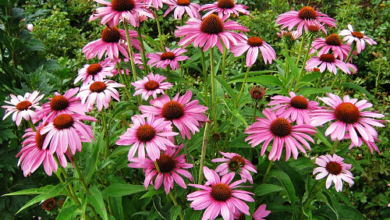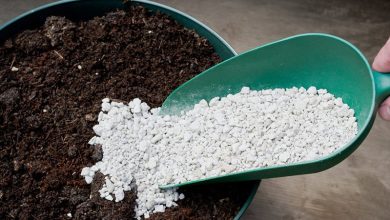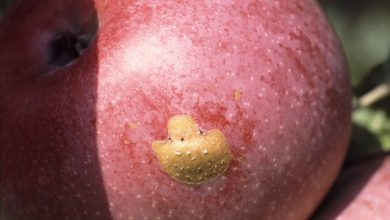Pest in Almond Tree: Learn to Identify and Eliminate It Step by Step

Hi Farmers! Today, we are going to treat, examine and comment on a practical or real case of diseases and pests in orchard plants, specifically it is a pest in almond trees.

To have a preliminary idea, the main characteristics of the almond tree (Prunus dulcis) are: that it is a deciduous stone fruit tree that flowers between February and March. It is a species that develops in dry land, in sandy and loose soils.
On this occasion, Alberto contacted us from Almería and told us that he has an orchard in which there are several specimens of young potted almond trees, all of which are on the same substrate, which is made up of equal parts of earthworm compost and peat. Currently, in a period of approximately 10 days, two specimens have already been lost.
Holes in the leaves of the almond tree: Is it a pest?
The symptoms of the plague in almond trees are the following:
As can be seen in the following photos, in most of the leaves there are small holes that are surrounded by a yellowish halo. This also appears on the edges of some leaves. Also on some edges you can see as if they were eaten.

On the other hand, it can be seen that the most affected leaves are the youngest, those that are located in the highest area, which are those of the new shoots.
These leaves also have small holes, and their color is turning yellow, plus all of them are rolling in on themselves and end up drying.
All the almond trees started to get like this at once. It has been possible to see some tiny insect on the leaves, but in which you have to pay close attention, that is, at first glance they go completely unnoticed.
Pests in almond tree
Firstly, the leaves do not show any type of dust or white spot, nor rot on the branches or stems, so at first glance it can be ruled out that it is a fungus.
Secondly, it can also be ruled out a priori that the problem is due to some lack or excess of some nutrient and that it is most likely a plague, since the insects feed on the leaves in most cases, leaving from small to large holes in them. In addition, this hypothesis is confirmed by the owner of the orchard, who, as previously mentioned, has seen some small insect on the leaves.
In principle, only the almond plants have been affected and all of them at the same time, which, moreover, are not planted in the same pot; so it can be thought or is likely that it is a pest in almond trees that affects this species in a certain way.

Leaf miner moth or Anarsia lineatella
For this assumption, one of the common pests that attacks the almond tree is the Anarsia lineatella, which is an insect in this case like a leaf and shoot miner moth. The first generation of this type of moth occurs from the beginning of May to the end of June.
It is a pest that mainly affects the fruits, and it is the larvae that feed on the young shoots, and once they have colonized one, they colonize the others very quickly, causing the shoot to wilt and dry out.
In this case, as we are talking about very young almond trees, if they were attacked by this pest, even if it began to attack through the new shoots, since they have such a low number of leaves due to their small size, it could be the case that the entire plant ends up dying.
Ecological remedies against almond pests
Ecological solution to the possible plague problem in almond trees:
The best thing to combat this type of pest is prevention, placing traps that attract these insects. And make treatments with ecological insecticides, both preventively and curatively.
In this case, what can be done is to remove the affected leaves, and treat the rest of the plant with an ecological insecticide. It is difficult to save the plant whose wilting stage is already advanced, given its small size, because it becomes infected very quickly whole; but it would be worth trying. And above all prevent for next year.
This is a hypothesis of what can happen to Alberto’s almond trees. But it is always difficult to make a true diagnosis through a photograph. So it could be another type of pest.
References
- David V Alford. (2012). Chapter 2 – Insects. Editor(s): David V Alford. Pests of Ornamental Trees, Shrubs and Flowers (Second Edition), Academic Press, 20-404.
- Dixon, AFG, Hon?k, A., Keil, P., Kotela, MAA, Šizling, AL, Jarošík, V. (2009).Relationship between the minimum and maximum temperature thresholds for development in insects. Functional Ecology, 23, 257–264.
- Chaplin-Kramer, R., O’Rourke, ME, Blitzer, EJ, Kremen, C. 2011. A meta-analysis of crop pest and natural enemy response to landscape complexity. Ecology Letters, 14, 922–932.
If anyone can provide more information about the pest that has been discussed, as well as other possible pests that may be affecting these almond trees or provide other solutions to the problem, etc., you can write it in the comments. In this way we can enrich each other and help improve our orchards.
We hope we have been able to help Alberto and that he can heal his almond trees soon. Until next time Agrohuerters.




